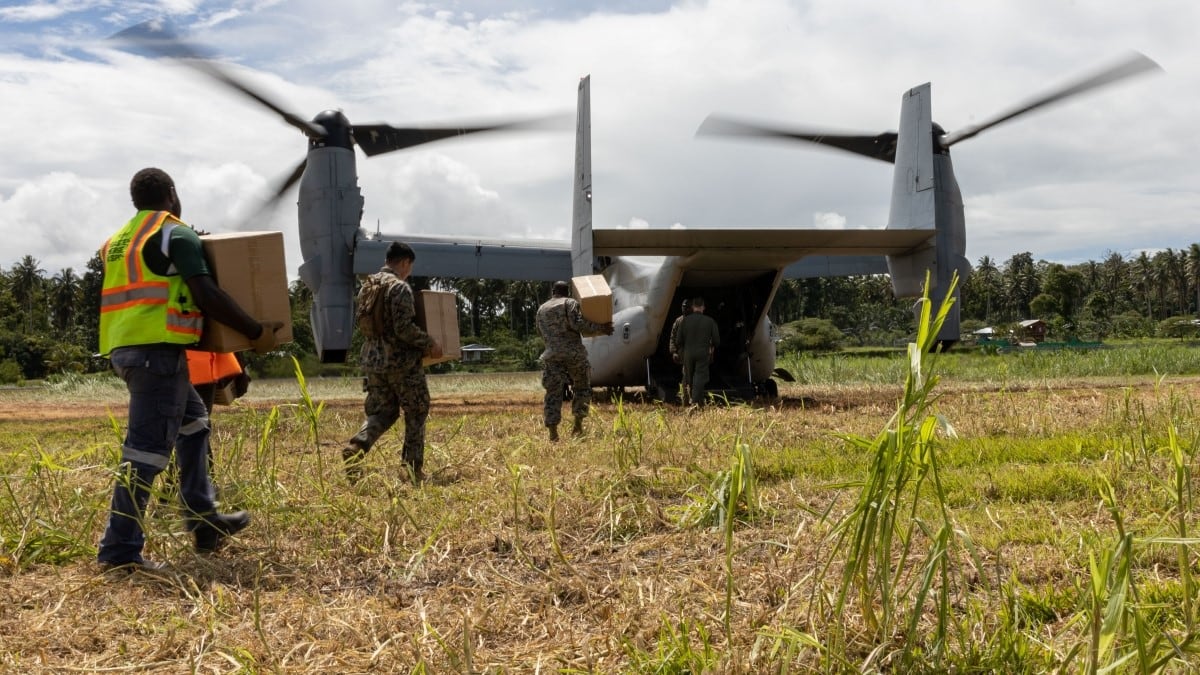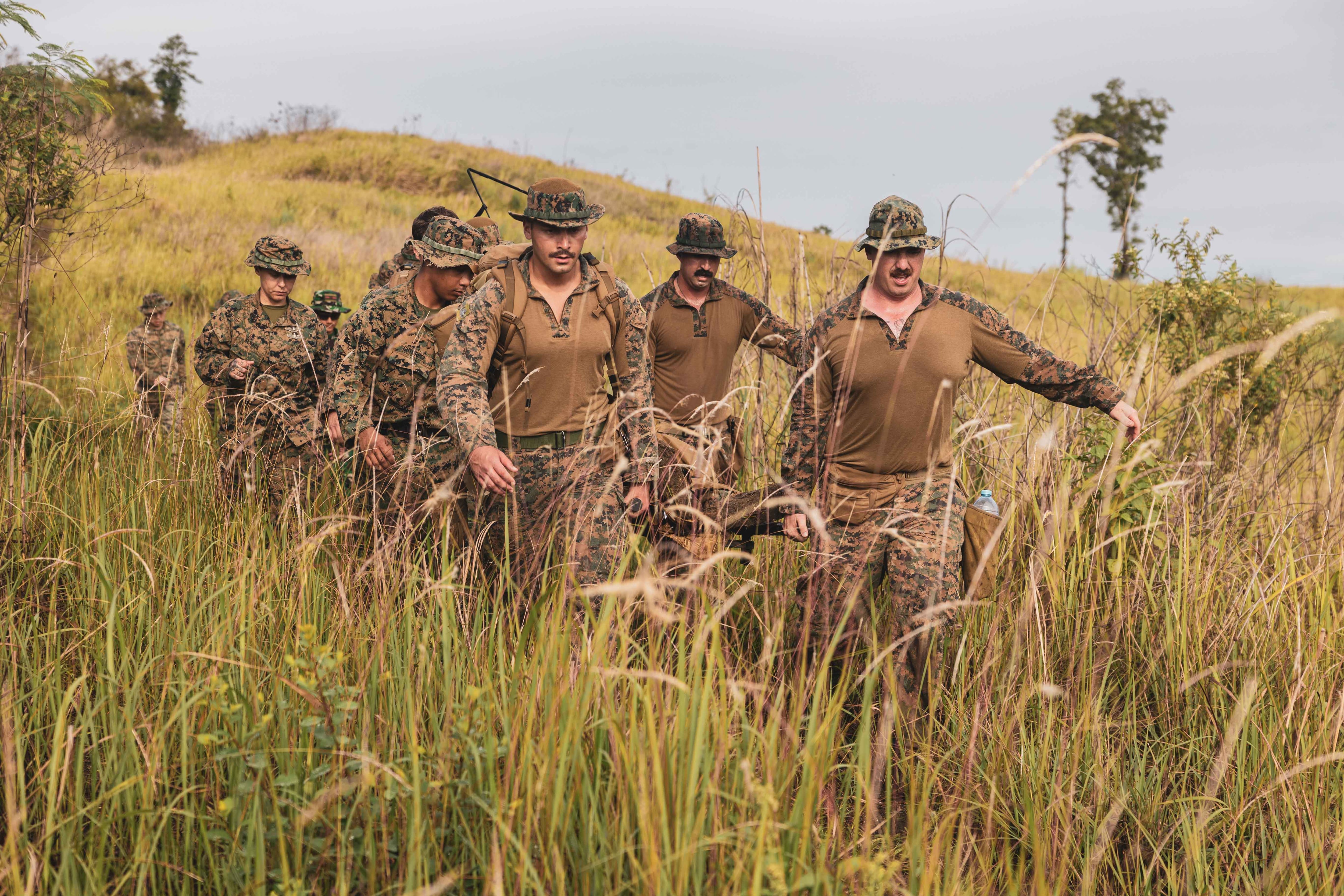A pair of Marine Corps rotational force units, one new and the other more than a decade old, are expanding the footprint of Marine units in the Pacific.
Marine Rotational Force-Darwin has deployed Marines for six-month rotations to Australia for a dozen years while Marine Rotational Force-Southeast Asia kicked off its first deployment in 2023.
Commanders for the most recent rotational force deployments spoke with media Friday about recent developments with the units.
Col. Brendan Sullivan commanded the 2,500 Marines of MRF-Darwin during its March to November deployment. Col. Thomas Siverts commanded MRF-Southeast Asia, or MRF-SEA, of about 200 Marines for its second deployment, from September to December. Siverts also commanded the 11th Marine Expeditionary Unit at the time.
Sullivan highlighted how the Darwin force in its past two rotations has pushed Marine units off Australia and into the nearby area of operations.
Marines embarked four MV-22B Osprey tiltrotor aircraft and a contingent of ground forces on the Australian HMAS Canberra, a first for the service.
RELATED

The force then sailed to the Philippines and ran two separate amphibious assaults.
While in the Philippines, the MRF-Darwin’s command element served as the coordinating unit for Marine, Army, Navy and Australian sensing data for maritime fires.
The unit also used its home base in Darwin as a hub in a lengthy kill web that could protect the region, should Australia face outside threats.
“Every single day Darwin is becoming more of a hub for us, not just in Australia but through the island chain,” Sullivan said.
As part of a larger effort to operate in far-flung and austere conditions, Marines set up a bare bones air base on the York Peninsula, Queensland, Australia complete with a fires unit armed with anti-ship missiles and a sensing unit to run air defense.
“We were able to project, employ and sustain the (unit) across that hub-spoke-node network for a total of about 1,400 miles,” Sullivan said.
Marines also used their own and Australian aircraft, including C-130s, C-17s and Ospreys to establish an Expeditionary Advanced Base that set up an Osprey maintenance base to extend the aircrafts operations during military exercises.
“These are real posture gains being made there that will be useful for us in conflict,” Sullivan said.
Both rotational force units covered sometimes-overlapping areas of the Pacific, even as their counterparts on the 31st MEU conducted standard operations in the region. Marine Corps Times recently reported work by the MEU during a humanitarian assistance mission to Papua New Guinea after the volcano eruption on Bougainville Island in August.
But, Sullivan said, when MRF-Darwin worked near the 31st MEU during their deployment, the two units shared information for targeting and kill webs. On one occasion a primary fuel source for the MRF-Darwin’s Ospreys was unavailable so 31st MEU Ospreys met their counterparts on an impromptu landing site to share fuel.
“If you take a look at the laydown of Marine forces west of the International Date Line, especially during peak seasons, which we call summer in the northern hemisphere, you’ll see a web of Marine forces across the region,” Sullivan said.

The MRF-SEA is a bit smaller but perhaps nimbler in its early version. The 200-Marine unit jumped around the Pacific in multiple partner and allied exercises during its deployment.
The new unit is composed of a small command element with attached functions such as command and control, reconnaissance, sensing, air naval gunfire and other expert teams.
Marines with MRF-SEA conducted four exercises during their deployment, three in the Philippines and one in Indonesia.
Siverts told reporters that his unit was able to use encrypted devices on host nation wireless networks to communicate with mobile phones while blending in on the network virtually undetectable.
Much of the work that the MRF-SEA did was to fill in needs for partner forces. For example, he said, they provided an infantry platoon during training with their Singapore counterparts and a reconnaissance element for another partner.
During the Philippine exercise known as Sama Sama in October, MRD-SEA formed a sensing node known as a Maritime Sensing Team for their host nation partners.
Marines deployed a SIMRAD radar, which is commercially available, to detect ship movement within straits and littorals. The team then confirmed the identity of any threats or targets using an RQ-20B Puma drone.
The small package of Marines and limited equipment filled gaps in radar coverage for forces operating close to shore, officials said.
Todd South has written about crime, courts, government and the military for multiple publications since 2004 and was named a 2014 Pulitzer finalist for a co-written project on witness intimidation. Todd is a Marine veteran of the Iraq War.




